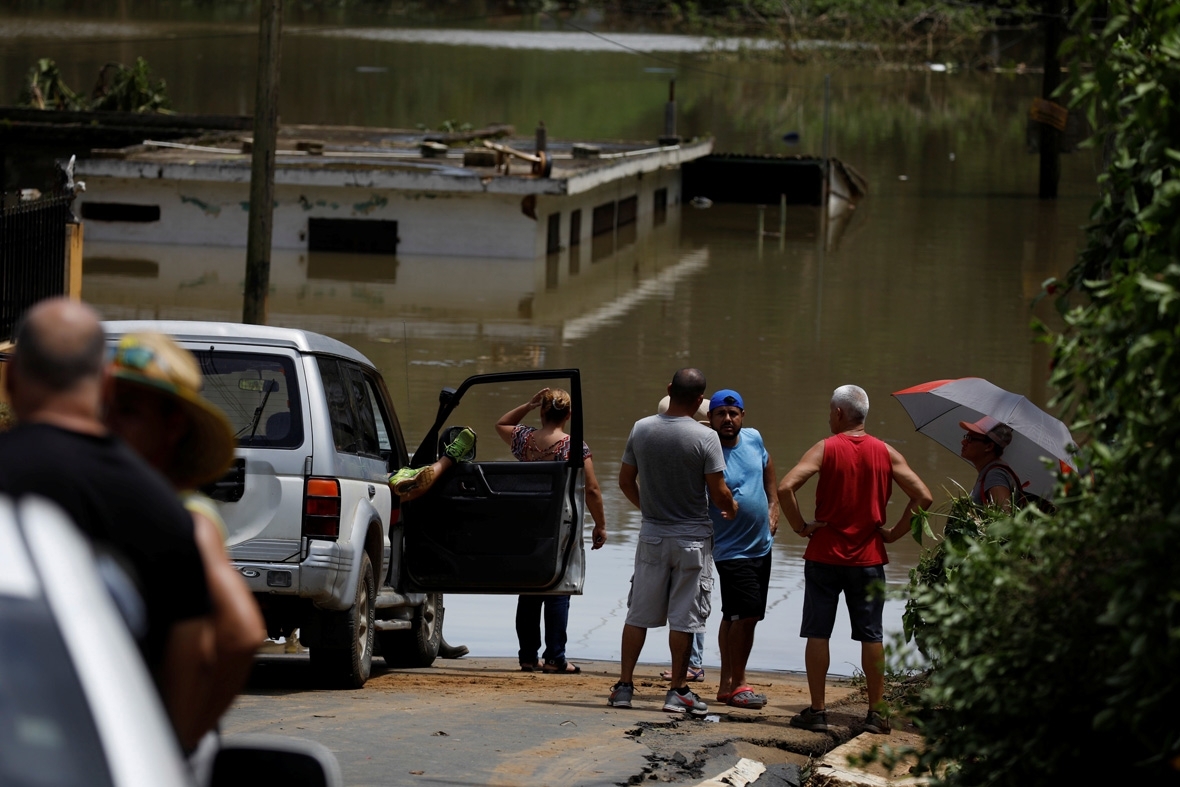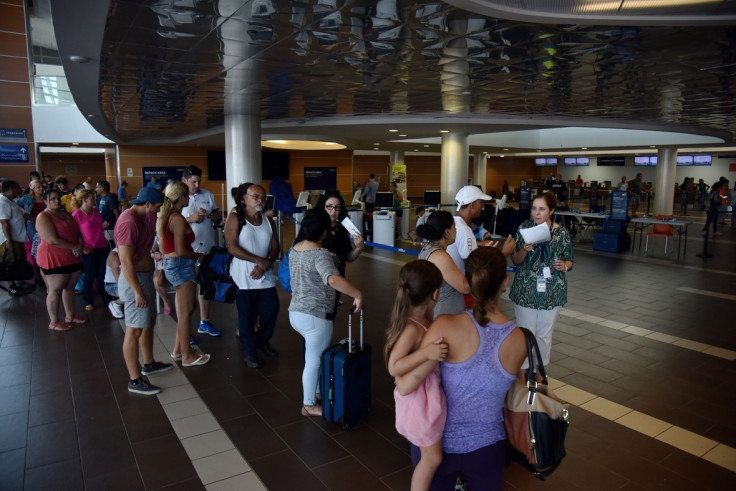Puerto Rico 'set back decades' by Hurricane Maria and a weakened dam may fail at any moment
The storm-battered US island territory has struggled through days with virtually no electricity, and more misery could be on the way thanks to a dam that might fail at any moment.
Hurricane Maria's destruction has set Puerto Rico back decades, according to the island's representative in the US Congress. The storm-battered US island territory has struggled through days with virtually no electricity, and more misery could be on the way thanks to a dam that might fail at any moment.
"The devastation in Puerto Rico has set us back nearly 20 to 30 years," said Puerto Rico Resident Commissioner Jenniffer Gonzalez. "I can't deny that the Puerto Rico of now is different from that of a week ago. The destruction of properties, of flattened structures, of families without homes, of debris everywhere. The island's greenery is gone."
The Guajataca Dam in the northwestern corner of the island, which was weakened by heavy rains from Hurricane Maria, is in danger of failing, posing a flood threat to thousands of homes downstream. Some 70,000 people who live in the valley below the dam have been under evacuation orders since Friday afternoon, when authorities first warned that the earthen structure was in danger of imminent collapse.



The fear of a potentially catastrophic dam break added to the pandemonium facing disaster relief authorities in the aftermath of Maria. The dam, which stands about 120 feet (37 metres) tall, was built in 1929 and supplies the surrounding region with hydropower, drinking water and irrigation supplies. The rdam holds back a reservoir covering about two square miles (5 square kilometres) in northwest Puerto Rico.
The government said it suffered a large crack after Maria dumped 15 inches (nearly 40 centimetres) of rain on the surrounding mountains and that it "will collapse at any minute." Nearby residents had been evacuated, but began returning to their homes after a spillway eased pressure on the dam. Puerto Rico Governor Ricardo Rossello personally urged residents of the area to heed evacuation orders after surveying damage to the dam on Saturday, telling reporters that a fissure in the structure "has become a significant rupture".


The National Weather Service in San Juan, the island's capital, extended a flash flood watch for communities along the rain-swollen Guajataca River. If the dam were to fail, flooding would be life-threatening, the Weather Service warned. "Stay away or be swept away," it said.
Hundreds of stranded travellers are filling the sweltering halls of San Juan International Airport anxious to know when they could leave and reconnect with families after Hurricane Maria devastated power and communications across the island. Fearful of checking out of hotels in case they could not get on the few flights available, worried passengers wait in long lines at Puerto Rico's main airport, struggling to get through to loved ones and airlines alike.
"Everything is hearsay at the moment because there is no communication," 31-year-old Rene Kessler, a medical student from Baltimore, Maryland, told Reuters as he prepared to spend the night in the airport ahead of what he hoped would be a flight back to the United States.

Maria, the second major hurricane to savage the Caribbean this month and the most powerful to strike Puerto Rico in nearly a century, carved a path of destruction through the island after ploughing ashore early on Wednesday. Arriving as a Category 4 storm on the Saffir-Simpson wind scale, with winds of up to 155 mph (249.5 kph), Maria ripped roofs from buildings, turned roads into gushing debris-strewn rivers and knocked out power across the entire island, home to 3.4 million people.
Puerto Rico officials have officially confirmed 10 storm-related fatalities on the island, and the hurricane was blamed for at least 21 other deaths across the Caribbean, the bulk of them on the devastated island nation of Dominica.
Puerto Rico's death toll is expected to climb as officials from remote towns continued to check in with officials in San Juan. Authorities in the town of Vega Alta on the north coast said they had been unable to reach an entire neighbourhood called Fatima, and were particularly worried about residents of a nursing home.












Mike Hyland, a spokesman for the American Public Power Association, which represents the Puerto Rican power agency, said that restoration of electricity is a long way off. The organisation is working with US Energy Department crews as well as New York Power Authority workers sent down by Gov. Andrew Cuomo to fly over the island and assess damage. Crews hoped to get helicopters and drones in the air over the next two days to assess the damage, but Hyland said they need to be patient and let the military continue rescuing people before focusing on restoring power.
Maria hit Puerto Rico about two weeks after Hurricane Irma, one of the most powerful Atlantic storms on record, killed more than 80 people in the Caribbean and the United States. The two storms followed Hurricane Harvey, which also killed more than 80 people when it struck Texas in late August and caused flooding in Houston.
© Copyright IBTimes 2025. All rights reserved.






















